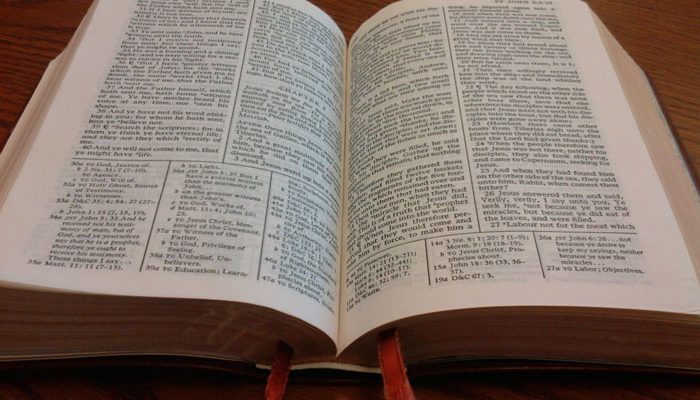
The following article was written by Kelsey Berteaux for LDS Living.
In 1979, the LDS Church published its first edition of the Bible in English, and in 1992, it was officially adopted by the Church as the Bible of preference.
But if you’ve ever looked at the title page of your LDS quad and wondered about King James and his Bible, you’re not alone.
Here are seven things all Latter-day Saints should know about the King James Bible (KJB).
1. The 1611 King James Version of the Bible is actually a composite of several earlier translations, not a new translation of older Greek and Hebrew manuscripts.
While the 47 translators who created the KJB were instructed by King James to consult the older (and closer to the original) Greek and Hebrew texts, they mostly referred to existing versions of the Bible.
This, as modern-day Church leaders note, is problematic because it obscures the original text: “When a sacred text is translated into another language or rewritten into more familiar language, there are substantial risks that this process may introduce doctrinal errors or obscure evidence of its ancient origin.” However, they also affirm, “While other Bible versions may be easier to read than the King James Version, in doctrinal matters latter-day revelation supports the King James Version in preference to other English translations.”
Fun fact: The Tyndale New Testament translation, which makes up an estimate 90% of the KJB New Testament, actually coined news words in English, including “Passover,” “peacemaker,” “scapegoat,” and even the adjective “beautiful.”
2. Politics in the 17th century affected how some words in the King James Version were translated.
The KJB purposefully reinforces the structure of the Church of England and the ordained clergy. For example, the word “church” was never to be translated as “congregation.” And the influence of period politics didn’t stop there.
One important reason the project was commissioned in the first place was because King James I of England didn’t like some of the footnotes in the then-current official version of the text, the Geneva Bible. A specific example he cited was a footnote justifying the Hebrew midwives who disobeyed the king’s order to kill all male Hebrew children. These notes and other aspects King James disagreed with were also censored.
Certainly, as the First Presidency has said, “The Bible, as it has been transmitted over the centuries, has suffered the loss of many plain and precious parts.”
3. Many common English idioms are rooted in the King James Bible.
The language we use today reflects teachings and stories from the King James Version of the Bible. An estimated 250 English idioms are said to have originated in the KJB.
Read Berteaux’s full article at LDSliving.com.





